NIL
Michigan Football Recruiting Heater Continues After $6M Donation


© Junfu Han / USA TODAY NETWORK via Imagn Images

Audio By Carbonatix
The Michigan football team is hot on the recruiting trail as the month of June comes to a close. The Wolverines have racked up more than a half-dozen commitments over the last week.
Coincidentally, they received a massive $6 million pledge from big time booster Matt Lester amid the heater. The program continues to flaunt its deep pockets while cashing in on the recruiting trail.
The donation came as a way to cover costs associated with the newly renovated and expanded football locker room. It was made as a way of recognizing the 2023 national championship team.
More on the gift and donor from MGoBlue.com:
Through Princeton Management, a real estate property management and development company, Matt [Lester] offers a summer internship program for U-M football student-athletes. He is also a founding member of the Champions Circle NIL collective specifically for football, and supports men’s and women’s basketball, swimming and diving, and women’s gymnastics through NIL.
Lester is a major donor. He’s also a founding member of the NIL collective that funds the football team’s payroll.
The Wolverines have been known to pay for top talent in the past. We’ll get to see an example of that investment in the 2025 college football season when freshman Bryce Underwood takes the field.
The school reportedly offered $12 million to land his commitment. It’ll hope to see it pay off with another title. More help is on the way in the 2026 recruiting class.
Michigan football is on a recruiting heater.
BREAKING: Five-Star EDGE Carter Meadows has Committed to Michigan, he tells me for @on3recruits
The 6’6 235 EDGE chose the Wolverines over Ohio State, Penn State, & South Carolina
“I thank God for guiding me through it all. I’M HOME. Go Blue!!〽️〽️”https://t.co/vP9hIvX9sb pic.twitter.com/TaK4mGP9J6
— Hayes Fawcett (@Hayesfawcett3) June 29, 2025
Seven new players have committed to the program this week, headlined by five-star defensive pass rusher Carter Meadows. The Wolverines beat out the rival Buckeyes for that pledge.
The other six players include the top prospect in the state of Hawaii, the second-ranked players in Missouri and Massachusetts, and four-star Texas wideout Zion Robinson.
Michigan now holds commits from the:
-No. 1 recruit in Hawaii
-No. 1 recruit in Montana
-No. 2 recruit in Missouri
– No. 2 recruit in Massachusetts
– No. 4 recruit in IllinoisMeet the commits: https://t.co/S7Md7GZ3Eg pic.twitter.com/WKPAoUnHNy
— TheWolverine.com (@TheWolverineOn3) June 28, 2025
With the newest group in the bag, the Michigan ’26 class ranks ninth in all of college football. The investment into players and facilities is paying off in the recruiting rankings. They’ll hope to see similar results on the field.
NIL
$2.6 million QB ranked as No. 1 transfer in college football
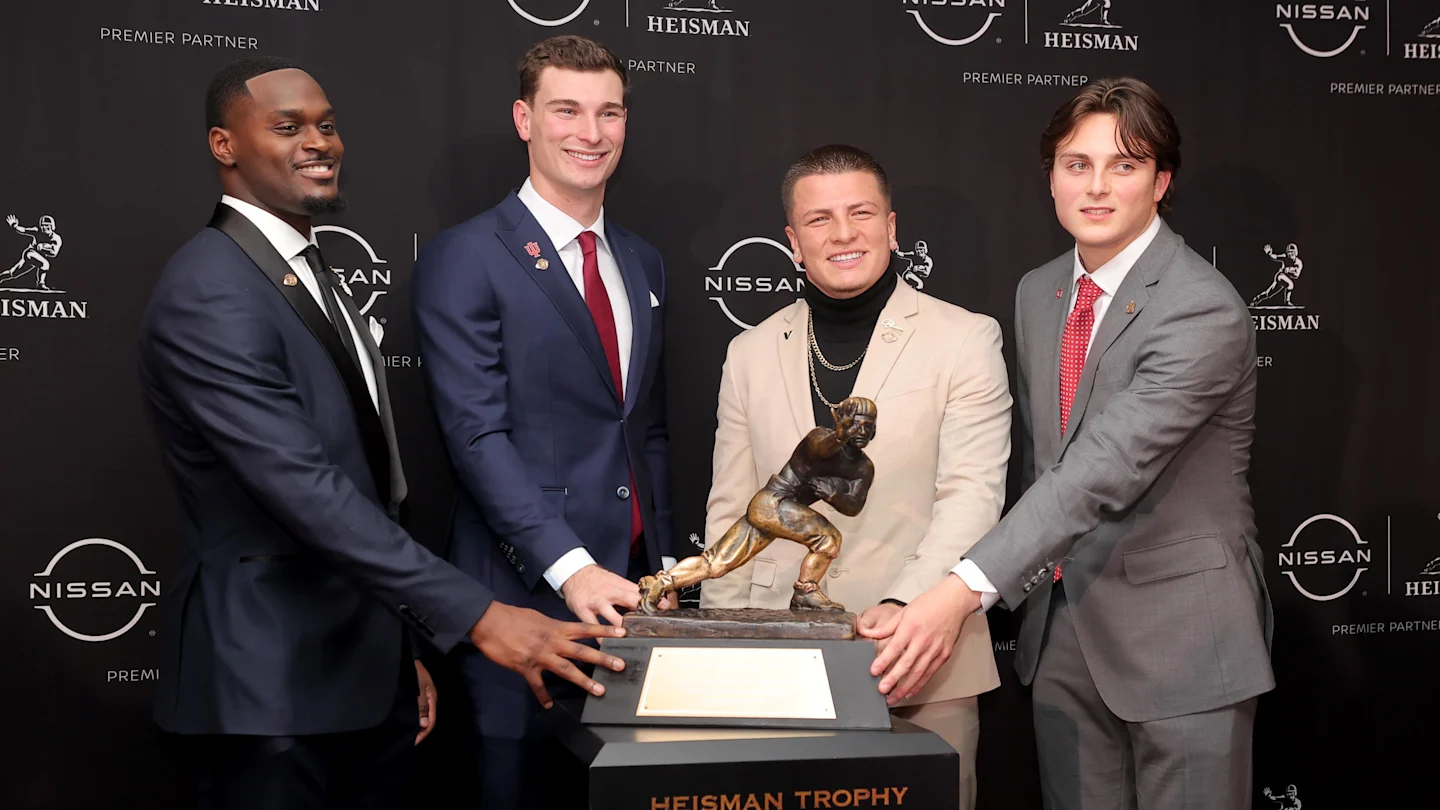
Indiana capped a perfect 13–0 regular season by winning the Big Ten title, snapping a long skid against Ohio State and securing the No. 1 seed in the expanded College Football Playoff.
Under second-year head coach Curt Cignetti (24–2 at Indiana), the Hoosiers authored a program-defining season that thrust the program firmly into the national spotlight.
In his first year at Indiana after transferring from Cal, quarterback Fernando Mendoza completed 226-of-316 passes (71.5%) for 2,980 yards, 33 passing touchdowns and six interceptions, while adding 240 rushing yards and six rushing scores.
He posted the second-highest passer rating among starting quarterbacks (181.4) and ranked fifth nationally in completion rate, sweeping major awards including the Heisman Trophy, Maxwell Award, Davey O’Brien Award, AP Player of the Year, and Big Ten Offensive and Quarterback of the Year honors.
Following his historic season, On3’s Pete Nakos ranked Mendoza as the top transfer addition of the 2025 season, pointing to his immediate, program-altering impact in Indiana’s breakout campaign.

A Christopher Columbus High School (Miami, FL) product, Mendoza entered the Power Five ranks as a three-star recruit and the No. 140 quarterback in the 2022 class according to 247Sports.
He steadily developed in California, highlighted by a career-best 3,004 passing yards, 16 touchdowns and six interceptions in 2024, before transferring to Indiana in December 2024.
That foundation set the stage for a 2025 breakout that elevated him into arguably the sport’s top quarterback and one of college football’s most valuable NIL assets, with an estimated valuation of $2.6 million.
Several national outlets and mock-draft models also project Mendoza as a potential top-10 pick in the 2026 NFL Draft.
As the No. 1 seed in the College Football Playoff, Indiana is scheduled to face No. 9 Alabama in the Rose Bowl quarterfinal on January 1.
A win would send the Hoosiers to the CFP semifinals (Jan. 8–9) and potentially the national championship game on Jan. 19, a run that would further solidify Mendoza’s rapid rise.
Read More at College Football HQ
- 25-touchdown RB shares farewell note after entering college football transfer portal
- College Football Playoff team loses All-Conference player to transfer portal
- College football team loses three All-Americans to transfer portal
- $2.4 million QB connected to major college football program in transfer portal
NIL
Tom Izzo on Pro Players Getting College Eligibility: ‘Shame’ on NCAA, Coaches
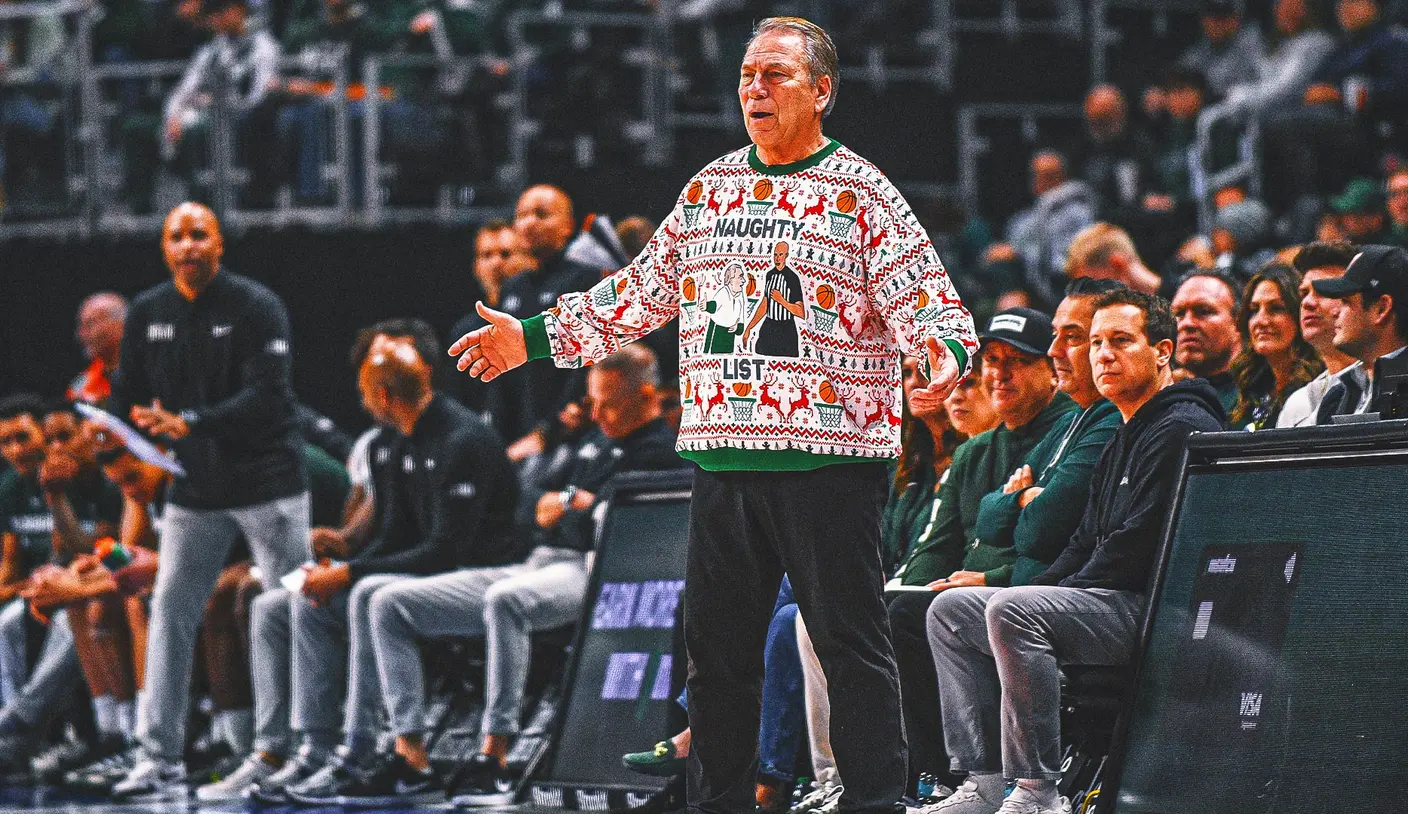
Longtime Michigan State coach Tom Izzo isn’t mincing words when it comes to the recent surge of former NBA G League players and international pros getting the green light to play college basketball around the country.
On Christmas Eve, Baylor received a commitment from James Nnaji, the 31st overall pick in the 2023 NBA Draft. The 21-year-old Nnaji, a 7-foot center from Nigeria, was granted immediate eligibility as a midseason addition and will have four years of eligibility remaining, according to USA Today.
“I thought I’d seen the worst — then Christmas came,” Izzo said, per USA Today. “What happened just topped it. … Now we’re taking guys that were drafted in the NBA and everything? … If that’s what we’re going to, shame on the NCAA. Shame on the coaches, too, but shame on the NCAA because coaches are gonna do what they gotta do, I guess, but the NCAA is the one.
“Those people on those committees that are making those decisions to allow something so ridiculous. … I just don’t agree with it.”
Nnaji never actually played in the NBA or the G League, but he did appear in five NBA Summer League Games for the New York Knicks in July and played professionally overseas last season in Spain and Türkiye.
This isn’t the first time a situation like Nnaji’s has presented itself. In October, the NCAA ruled to allow guard London Johnson, 21, to join Louisville next year with two seasons of eligibility despite him having played three years in the G League.
Izzo revealed that he received a text from “a very famous, great coach” that criticized these fluid eligibility rules. “What we’ve done in the NCAA has been an absolute travesty to me,” the message read, according to USA Today.
Izzo went on to predict that, if polled, “maybe 5-10%” of D-I coaches would agree with these changes.
“If that’s the way it is, and if I have to make those adjustments, then let’s make them,” he added. “Let’s go pro if that’s the way it is, but let’s not be half you-know-what.
“Because there’s no such thing as being half that.”
Want great stories delivered right to your inbox? Create or log in to your FOX Sports account, and follow leagues, teams and players to receive a personalized newsletter daily!
NIL
Michigan NIL collective Champions Circle hits ground running after Kyle Whittingham hire
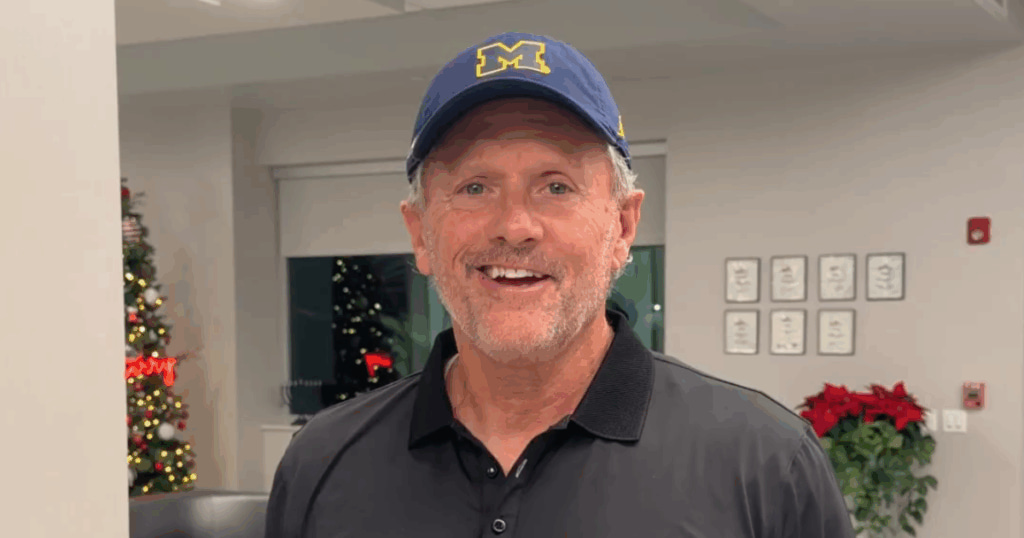
The coaching search is over, but the work is just beginning. Michigan Wolverines football has a new leader in Kyle Whittingham, the 22nd head coach in program history, and he’s already hard at work in Orlando as the Maize and Blue prepare for the Dec. 31 Citrus Bowl against Texas.
Michigan’s official NIL collective, Champions Circle, has launched its ‘Membership 2.0,’ an opportunity for fans to receive “new benefits, new opportunities to engage with players and coaches and new ways to support those who wear the Maize and Blue.”
Advertisement
“As Coach Whittingham takes the helm to lead the next chapter in Michigan football history, one thing is clear: success in today’s college football landscape requires support from each and every fan,” the collective shared in a press release.
By becoming a Champions Circle member, Michigan fans are “directly supporting NIL opportunities that help:
• Empower our new coach to establish the next great era of Michigan Football
• Build championship-level depth at every position
• Prevent rivals from poaching our top talent
The First 100 New Yearly Victors & Valiant Members will receive a football signed by Whittingham and freshman quarterback Bryce Underwood AND an invitation to a first-of-its-kind “Meet Coach Whittingham” webinar in 2026.
Advertisement
Here are details on membership tiers for Champions Circle:

The 66-year-old Whittingham is already in Orlando connecting with Michigan staff, players and their families. The Wolverines have one game remaining but are also focused on next season.
Whittingham was introduced to Michigan fans on social media Saturday evening and will hold his introductory press conference Sunday morning at 11 o’clock from the team hotel.
NIL
Super-sized conferences are breaking college football
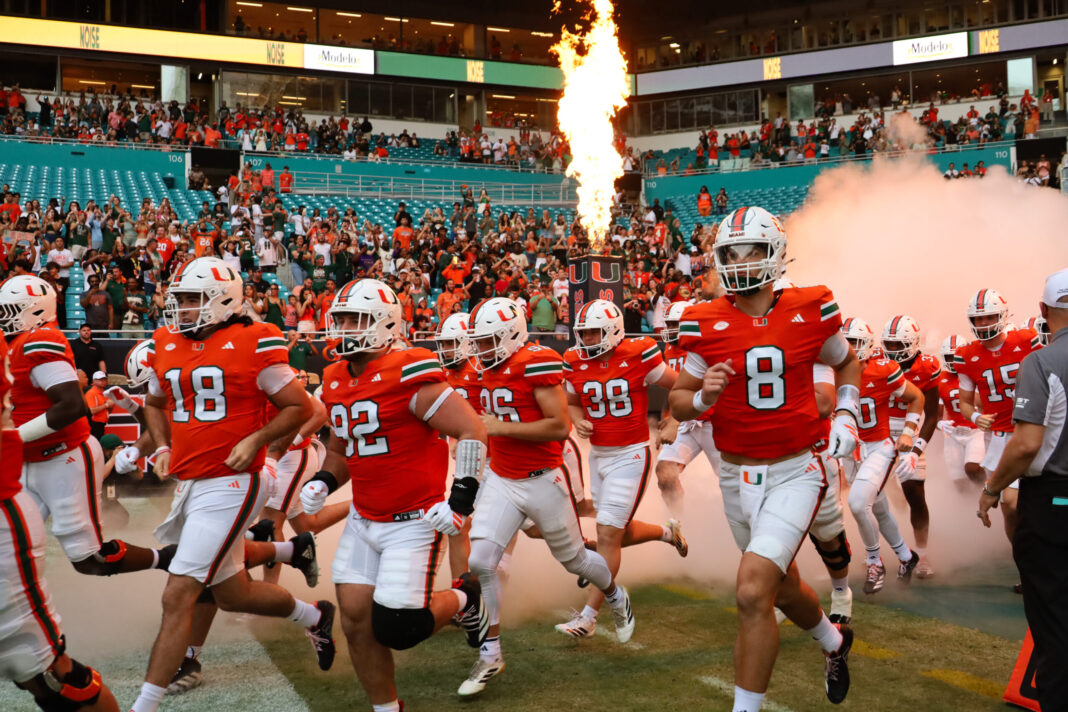

The dawn of NIL has forced a realignment of college conferences, putting pressure on the structure of conference championships. When you look at the Power Four football conferences (ACC, Big 10, Big 12, and SEC), each have expanded somewhere between 16 and 18 members.
The past two seasons have demonstrated that the current conference championship format is not equipped to corral the super-sized power conferences. Deciding the top teams in the country is left to too many qualitative metrics (strength of schedule, head to head, and common opponents).
Something needs to change.
Texas A&M’s path to CFP
Looking at the SEC, Texas A&M had a historic 11-1 regular season, good for one of the best records in the nation. However it featured in-conference wins against seven out of the nine worst teams in the SEC; and every team they beat had a conference win percentage of .500 or worse.
The Aggies season would end in disappointing fashion as they lost twice in a row, against in-state rival the Texas Longhorns 27-17 and in the first round of the College Football Playoff against the Miami Hurricanes 10-3.
A&M arguably only faced three impressive teams all season (Miami, Notre Dame, Texas), and its only win of the three came in the form of a controversial one-point victory over ND in Week 2.
TAMU is one of multiple glaring examples of how massive conferences allow teams to waltz unscathed through their conferences thanks to scheduling issues.
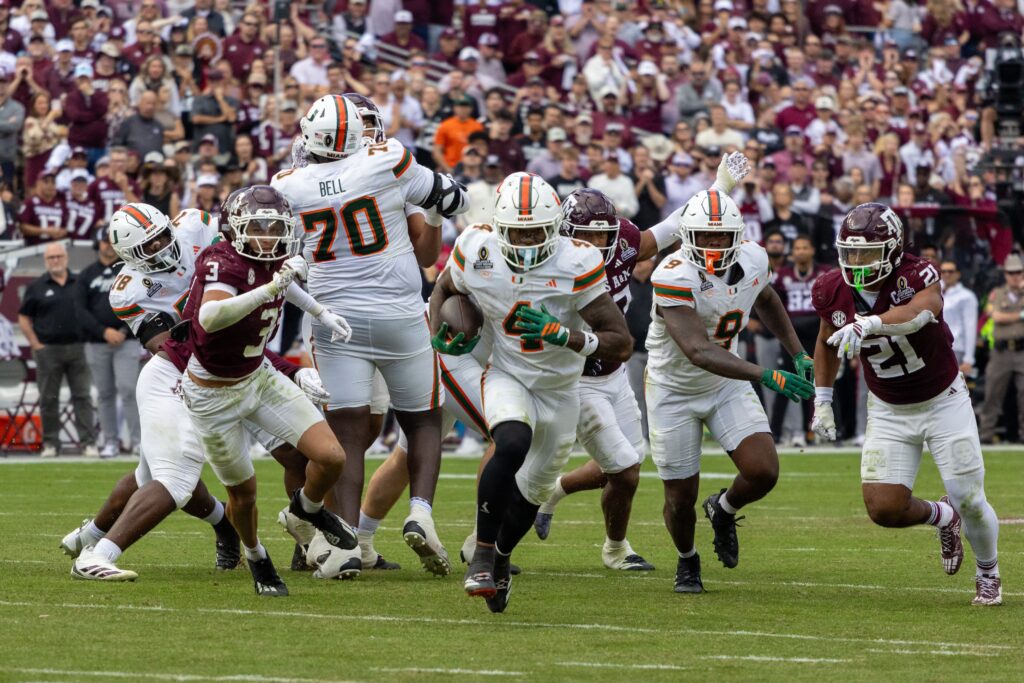
Is a return to Divisions the solution?
It would seem creating divisions within the conferences should be closely considered. This would stoke more fierce rivalries among inter-division opponents, ensuring more even matchups and a clearer cut conference championship.
Looking to the past, all of the Power Four conferences had divisions but were eliminated across the last decade — a division format made less sense with smaller membership.
In 2024, the Big 12 (with 16 members) had a four-way tie at the top of the conference between Arizona State, Iowa State, BYU, and Colorado, who all finished with a 7-2 record. By the end Arizona State and Iowa State faced off due to tiebreakers, but many thought that BYU was more deserving than Iowa State.
This season in the ACC (with 17 members), Virginia guaranteed their spot after a 7-1 conference record, but there was a 5-way tie for second place between Duke, Miami, Georgia Tech, SMU, and Pitt. As Miami fans well know, the unranked 7-5 Duke Blue Devils were awarded the second spot over a 10-2 Miami team ranked No. 12 in the country at the time.
Applying the Divisions to the ACC
When looking at the ACC, the conference has 17 members, which forces teams to play more or less games than one another. All of this would be solved if another team joined the conference.
But let’s concentrate on how the current structure of the ACC would address this issue. There would be three main things taken into consideration: rivalries, location, and talent. It might look something like this:
ACC North: Syracuse, BC, Pitt, Louisville, VT, Virginia, Clemson and Georgia Tech
ACC South: Miami, FSU, SMU, Cal, Stanford, Duke, UNC, NC State and Wake Forest
For the divisions, it would be fair to re-evaluate every five years whether the two divisions are evenly split. Currently the competition would be tight; each division would be well balanced.
The proposed system would also allow scheduling and travel to be much simpler; every division team plays one another, the north would have 7 conference games while the south would have 8. At the end of the season, the two representatives from each division would face-off for the championship.
As some guidelines here are the five hypothetical tiebreaker rules:
1 – Conference Record
Conference records always take importance over every guideline but would have more weight as every team faces each other.
2 – Head to Head
Due to everyone facing off this should solve for tiebreakers except for three (or more) way ties.
3 – Overall Record
In the case of Miami – Duke the tiebreaker was Win Percentage of Conference opponents. In the context of a 7-5 record, the overall record should have more weight.
4 – National Ranking (AP poll / CFP)
Ideally the conference championship should be settled by this point but if it goes this far National Ranking should be considered in ensuring that the best teams compete for the conference championship.
Will realignment fix everything?
Fans want more entertaining matches and teams want ease of scheduling and travel.
The answer is simple — either return to smaller conferences or implement divisions to make conferences matter.
In the end, no matter the solution, it won’t be perfect. Sports fanatics will always say that there will be a better format, but the least we can do is learn from past mistakes.
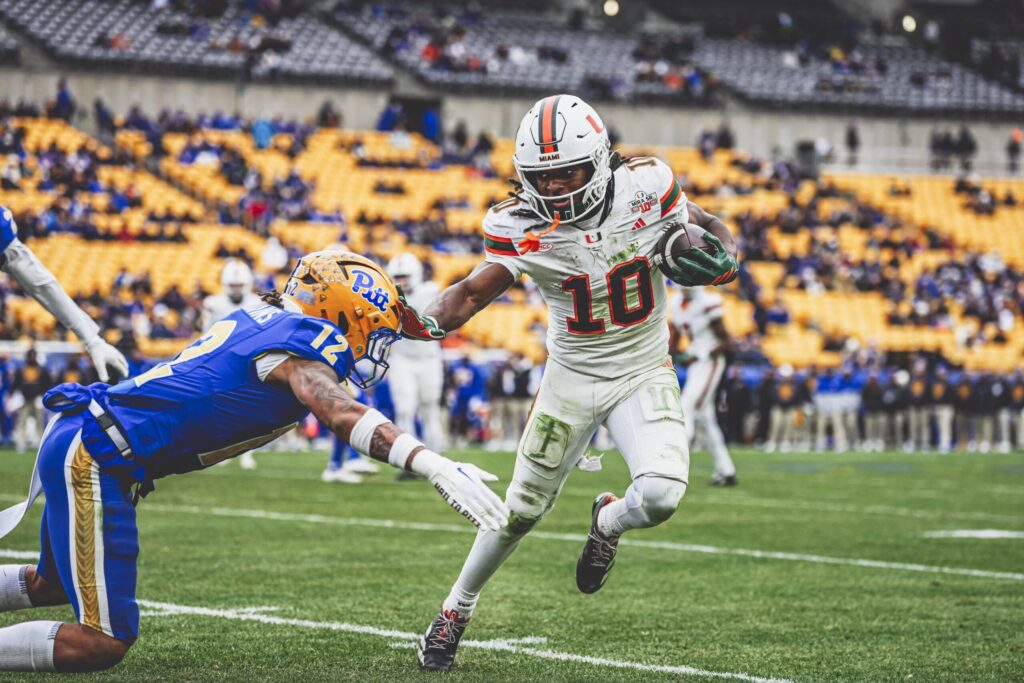
NIL
College football team loses three All-Americans to transfer portal

North Texas capped a program-best 12–2 season with a New Mexico Bowl win, but quickly faced major roster turnover as quarterback Drew Mestemaker, running back Caleb Hawkins, and wide receiver Wyatt Young all entered the NCAA transfer portal.
Mestemaker broke out as a redshirt freshman in 2025, leading the FBS with 4,379 passing yards and 34 touchdowns following Saturday’s 49–47 victory over San Diego State.
He began his North Texas career as a walk-on and earned conference offensive honors and national attention before deciding to test the portal.
Hawkins, the Mean Green’s freshman back, finished 2025 as one of the nation’s most productive rushers, totaling 1,434 rushing yards and leading the FBS with 25 rushing touchdowns, highlighted by a 198-yard, three-touchdown bowl performance to cap the year.
Young, meanwhile, paced UNT’s receiving corps with 1,264 yards and 10 touchdowns (ranking among the top three nationally) and earned first-team All-American and All-Conference honors.
Losing the nation’s top passer, the FBS’s most productive freshman runner, and a top-three WR in one offseason represents an immediate top-to-bottom offensive reset for North Texas.

For the transfer market, all three are premium, high-demand assets — Mestemaker as a starting QB target for Power-Five teams, Hawkins as a feature back with breakout tape, and Young as a proven perimeter threat.
Mestemaker has already been linked to Oklahoma State (connection via coach Eric Morris), Indiana, Texas Tech, and Oregon, while Hawkins and Young are expected to draw attention from both Group-of-Five and Power-Five programs.
Hawkins, a three-star recruit from North Rock Creek High School (Shawnee, Oklahoma) in the 2025 class, also held offers from Emporia State and Central Oklahoma before committing to North Texas in September 2024.
Young, a three-star prospect from Katy Tompkins High School (Katy, Texas) in the 2024 class, signed with the Mean Green over offers from Rice, Arizona, Memphis, Air Force, and others.
Three top underclass producers hitting the transfer portal at once underscores how quickly the transfer era can reshape a program, leaving Group of Five teams that develop stars grappling with retention issues and the financial pressures of NIL.
Read More at College Football HQ
- No. 1 college football team linked to 1,700-yard RB in transfer portal
- Top 3 transfer portal landing spots for 4,000-yard quarterback Drew Mestemaker
- College football team loses starting QB to NCAA transfer portal
- Major college football program surges as candidate for 4,000-yard QB
NIL
College football team loses starting QB to NCAA transfer portal
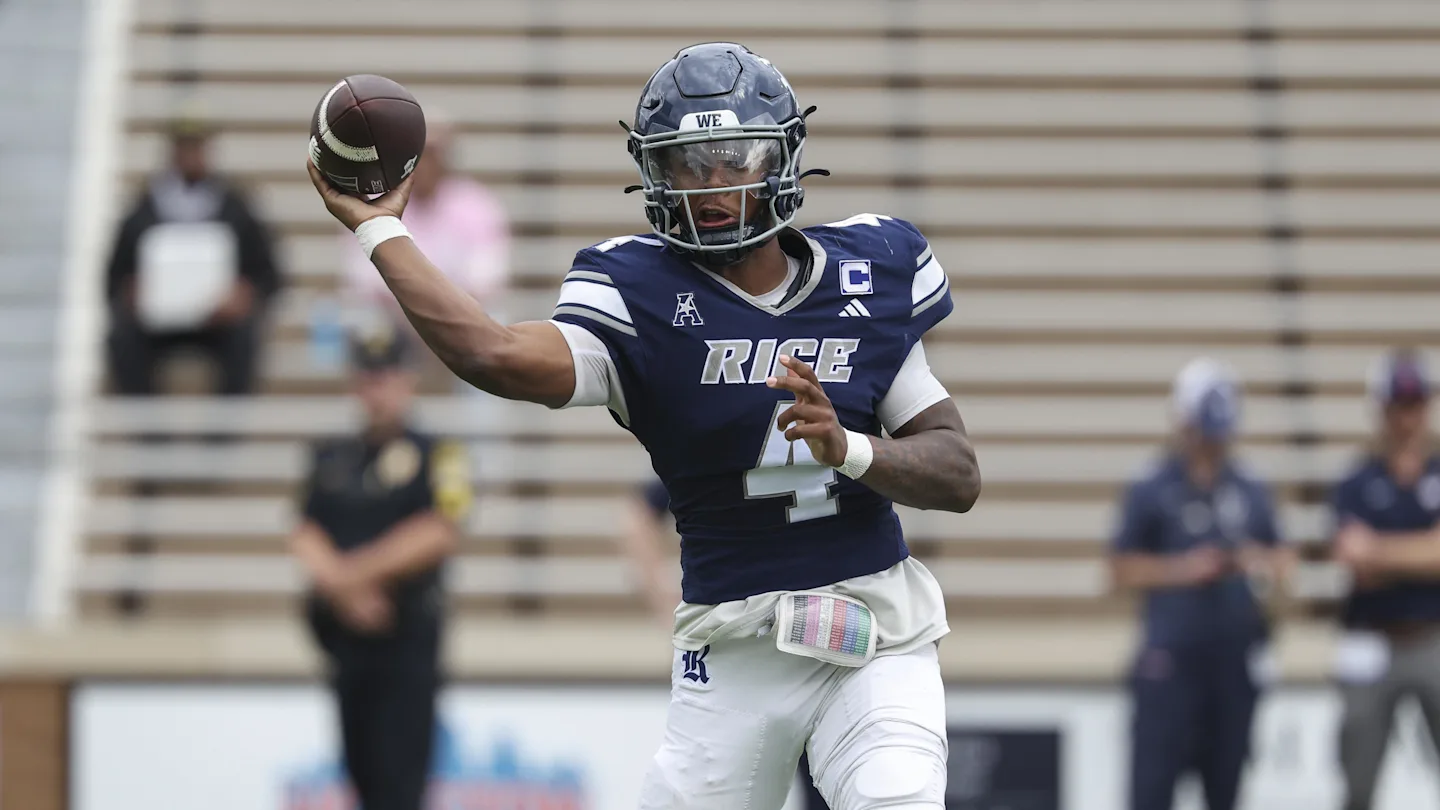
In its first year under head coach Scott Abell, Rice finished the 2025 season 5–7 overall (2–6 in the American Conference) but still earned an Armed Forces Bowl invite, where it will face Texas State (6–6) on January 2 in Fort Worth, Texas.
Across 12 games in 2025, Jenkins completed 119 of 172 passes (69.2%) for 1,025 yards with nine touchdowns against two interceptions, while also carrying the ball 151 times for 531 yards and five scores.
That momentum may be short-lived, however, as Rivals’ Hayes Fawcett reported on Saturday that Jenkins plans to enter the NCAA transfer portal, adding another domino to an already loaded quarterback transfer market.
A Houston, Texas product who signed with Rice in February 2023, Jenkins worked his way into the program as a multi-role quarterback/athlete, appearing in limited action early in his career before being named the 2025 starter.
In his first full year as the starting quarterback, Jenkins earned American Conference All-Academic recognition.
Prior to signing with Rice, he starred at Alief Taylor (Houston), where he threw for 4,735 yards and 46 touchdowns against just six interceptions in 22 varsity games and earned All-District 23-6A honors as a junior.
Jenkins was 247Sports’ No. 93 quarterback in the 2023 class, committing to Rice over offers from Alcorn State, East Texas A&M, Jackson State, and Lamar.

With a 69.1% career completion rate and proven mobility, Jenkins profiles as a strong fit for spread-option or run-oriented Group-of-Five offenses that prioritize efficiency and quarterback movement.
He could appeal to programs seeking an experienced starter while also offering value as depth at the Power-Five level, with his Texas roots strengthening his regional appeal.
Some notable programs that have reportedly shown interest in adding a quarterback through the transfer portal include Florida State, Clemson, North Texas, TCU, Virginia Tech, and Cincinnati.
Read More at College Football HQ
- $2.4 million QB emerges as transfer portal candidate for SEC program
- Major college football program ‘expected to hire’ 66-year-old head coach
- College Football Playoff team loses player to transfer portal
- College Football Playoff team loses starting QB to transfer portal
-

 Motorsports3 weeks ago
Motorsports3 weeks agoSoundGear Named Entitlement Sponsor of Spears CARS Tour Southwest Opener
-

 Motorsports3 weeks ago
Motorsports3 weeks agoDonny Schatz finds new home for 2026, inks full-time deal with CJB Motorsports – InForum
-

 Motorsports3 weeks ago
Motorsports3 weeks agoRick Ware Racing switching to Chevrolet for 2026
-

 NIL3 weeks ago
NIL3 weeks agoDeSantis Talks College Football, Calls for Reforms to NIL and Transfer Portal · The Floridian
-
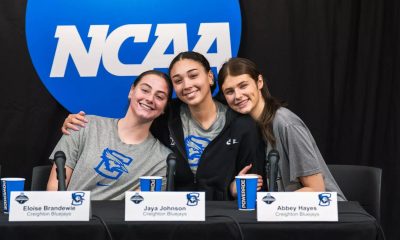
 Sports2 weeks ago
Sports2 weeks ago#11 Volleyball Practices, Then Meets Media Prior to #2 Kentucky Match
-

 Motorsports2 weeks ago
Motorsports2 weeks agoSunoco to sponsor No. 8 Ganassi Honda IndyCar in multi-year deal
-
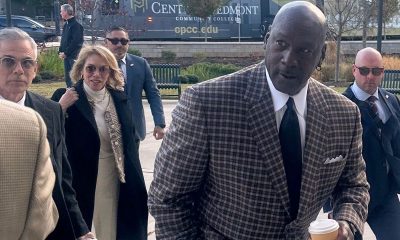
 Motorsports3 weeks ago
Motorsports3 weeks agoNASCAR owes $364.7M to teams in antitrust case
-
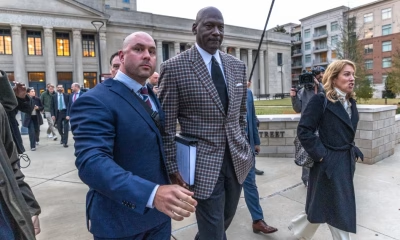
 Motorsports2 weeks ago
Motorsports2 weeks agoNascar legal saga ends as 23XI, Front Row secure settlement
-
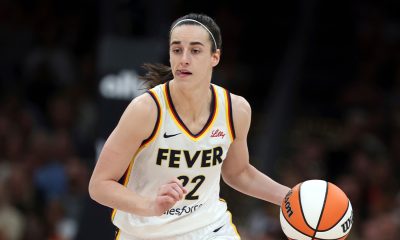
 Rec Sports2 weeks ago
Rec Sports2 weeks agoWNBA’s Caitlin Clark, Angel Reese and Paige Bueckers in NC, making debut for national team at USA camp at Duke
-

 Motorsports3 weeks ago
Motorsports3 weeks agoAccelerating Inclusion: Breaking Barriers in Motorsport

































